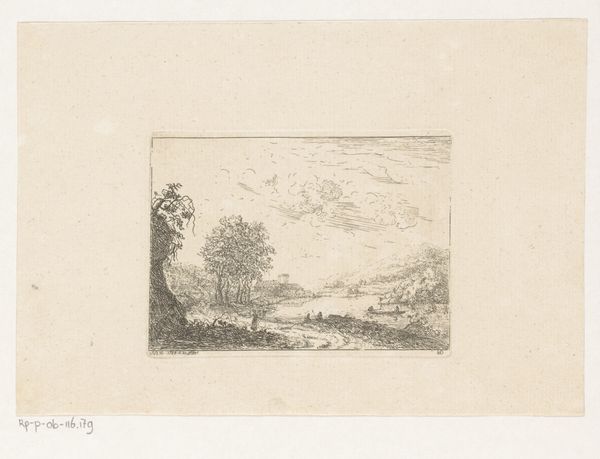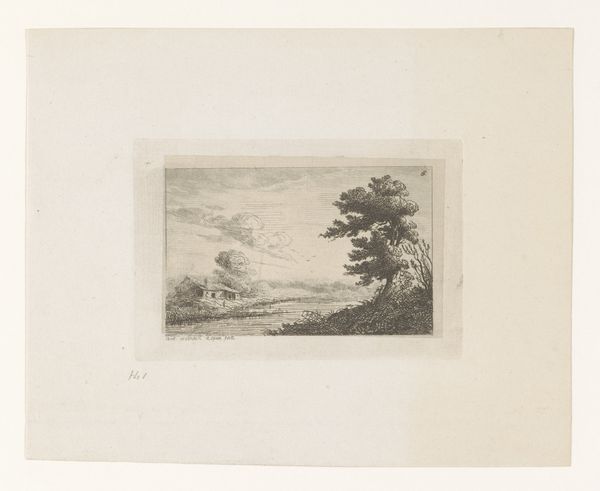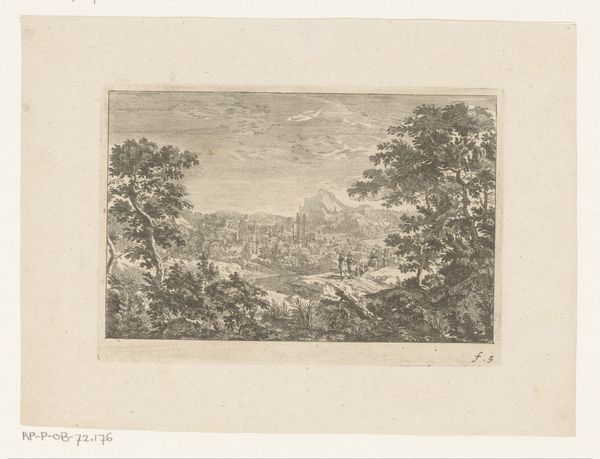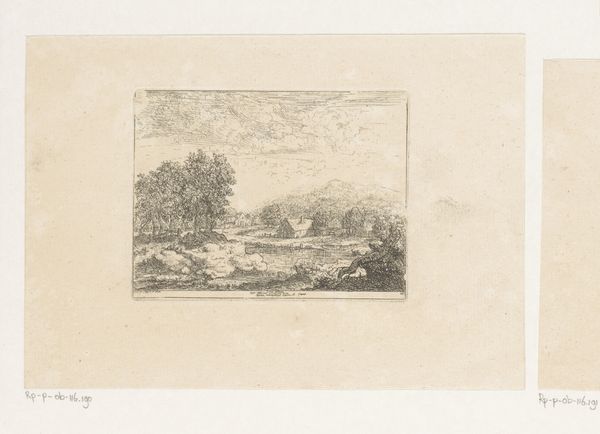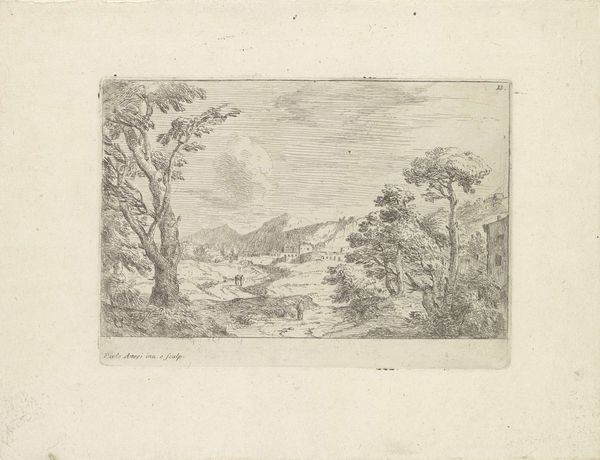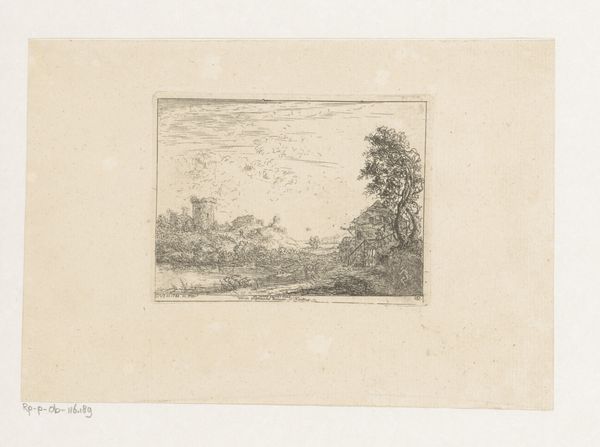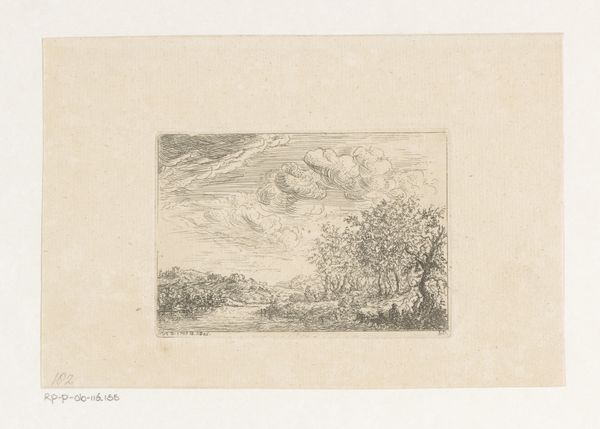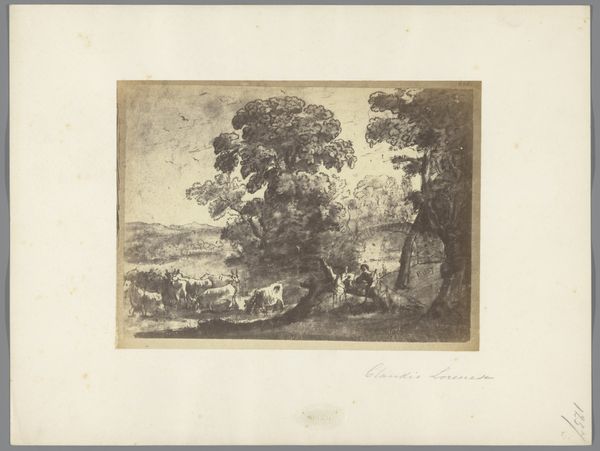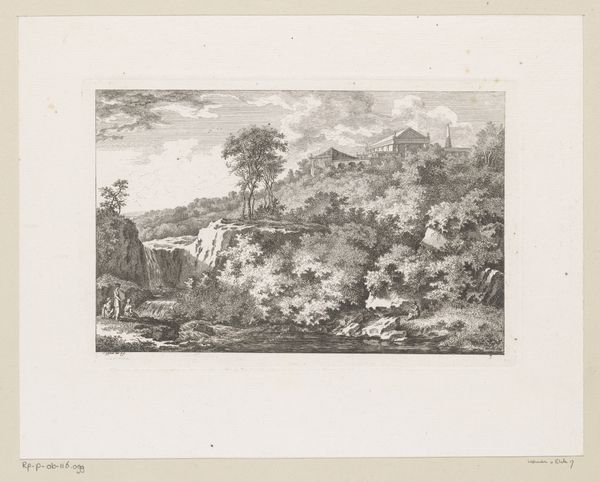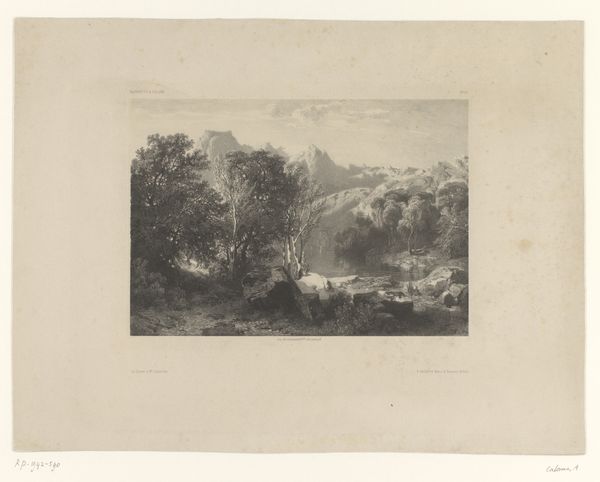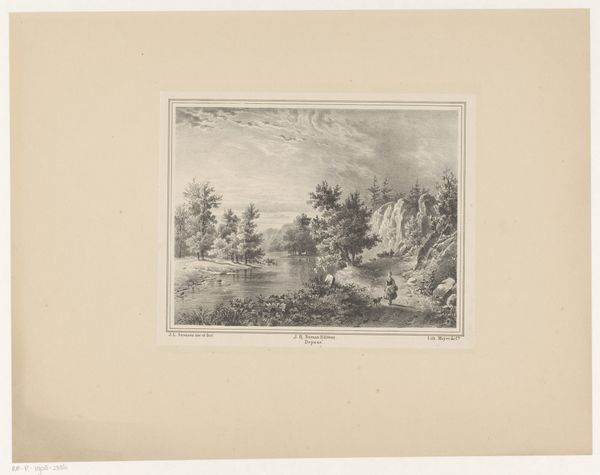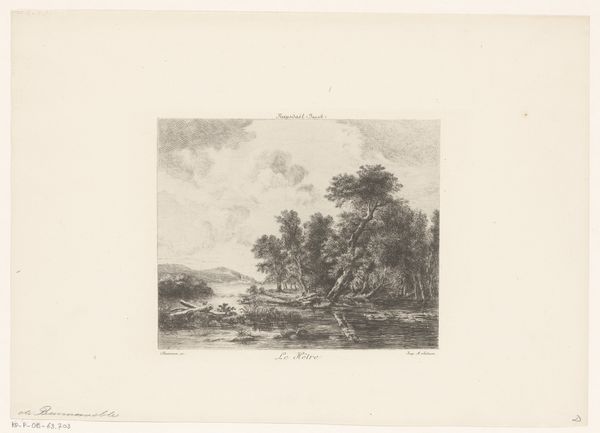
Dimensions: height 123 mm, width 189 mm
Copyright: Rijks Museum: Open Domain
Curator: We’re now looking at "Gezicht op Augsburg," an etching and engraving on paper, created in 1763 by Christian von Mechel. It’s held here at the Rijksmuseum. Editor: My first impression is how orderly and composed it feels. It's a very serene and precise depiction. There's such clarity in every little detail, down to individual bricks it seems! Curator: Absolutely, it reflects the Baroque aesthetic of the time, aiming for grandeur and precision. But, importantly, it also exemplifies the growing public interest in cityscapes during the Enlightenment. Prints like this became increasingly popular, fueling a desire to see and understand the world beyond one’s immediate locale. They weren't merely art objects, they were tools of education and, frankly, instruments of early tourism. Editor: The prominent tower almost hidden by the shrubbery…it anchors the whole scene for me. Its classical lines give such weight to the image, connecting it, symbolically, to the ancient ideal of urban order, Roman ruins covered and reclaimed. Does it denote protection, power or status within the community depicted here, perhaps? Curator: Interesting thought. Such structures indeed conveyed prestige and defense capabilities, key components of civic pride. Its placement to the right might even hint at Augsburg’s ambition, strategically positioned and proudly showcasing their achievements on the edge of the water to the far left. Editor: The etching technique lends such crispness; I’m also struck by the dynamic sky compared to the rigid buildings. It reminds me of those ideas surrounding the "sublime," nature acting almost indifferent to human endeavors… Or perhaps even reflecting and mirroring its aspirations, I don't know! Curator: Perhaps both? By that era, cities like Augsburg, though still marked by established hierarchies, were beginning to be sites of new social and economic mobility. Such picturesque views provided a form of visual validation and reinforcement for civic identity during that dynamic period of transformation and the early stages of industrial advancement. Editor: So, from classical symbols to social aspirations... it seems even in a small print like this one, many symbolic and social landscapes are simultaneously layered and presented to its viewers! Thank you! Curator: A perfect encapsulation!
Comments
No comments
Be the first to comment and join the conversation on the ultimate creative platform.
